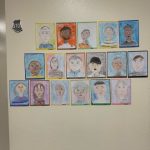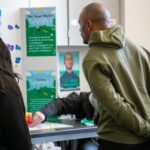The definition of pedagogy is the practice of teaching, and the methodology used to influence children’s learning and development.
How this applies to the classroom in reality varies from teacher to teacher. For too long, public education has relied on a model that equates learning with compliance. Rote memorization, standardized testing, and one-size-fits-all curriculum dominate classrooms, especially those serving students of color. This system, originally designed without these students in mind, often values correct answers over critical thinking, silence over curiosity, and conformity over cultural identity.
At TAF, we’re seeking to transform the way teachers implement and think about pedagogy. Not just as a way to make learning think, but as a tool for building a culture of equity.
Education should be a tool for liberation, not assimilation. Instead of preparing students to pass a test, the STEMbyTAF model prepares students to change the world by starting within their own communities.
This is accomplished through project-based learning rooted in racial equity, identity-affirming content, and real-world application. When students explore problems that matter to them, designing solutions for community partners or developing business proposals to launch student-led clubs, they begin to see school as a place to cultivate their dreams.
What makes this approach equitable? Agency.
When students are at the center of their learning, they are not passive recipients of information; they are researchers, designers, engineers, and advocates. They co-author rubrics. They lead team meetings. They reflect, revise, and reimagine.
TAF’s model cultivates autonomy because we trust students — particularly students of color — to shape their own learning journey when given the space, tools, and support to do so. One 7th-grade student recently said it best after leading a project to address housing insecurity: “I didn’t know school could be something that actually helps people.” This is the kind of transformation we seek. Not just better grades, but meaningful learning.
The STEMbyTAF model is a blueprint for what is possible. The students we partner with are not future leaders; they are leading now. We’re just clearing the path.
But this work can’t be done on our own. It takes meaningful partnerships to widen that path for thousands more. We’re working to build a system where every student sees themselves centered in their public education — and we’re cultivating a community that is ready to center the student.

